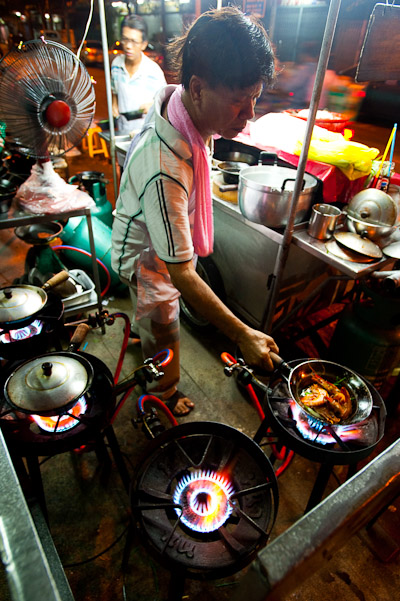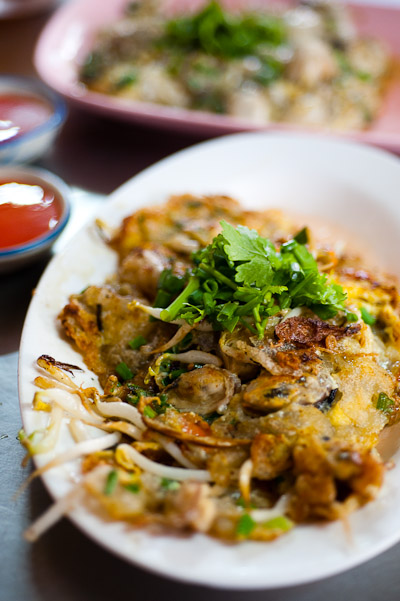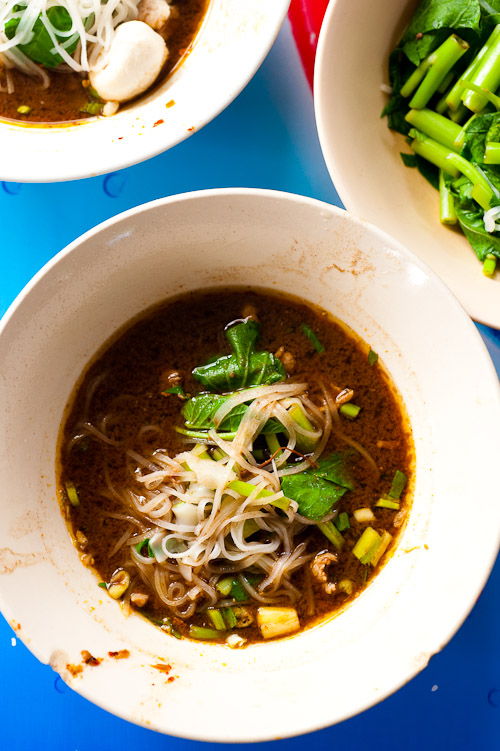 I'm finally back home and hope to do a couple more Euro posts in the near future, but for now am keen to jump back into the Thai stuff...
I'm finally back home and hope to do a couple more Euro posts in the near future, but for now am keen to jump back into the Thai stuff...
Khao tom (ข้าวต้ม) translates as 'boiled rice', but can be refer to a couple different rice-related food concepts. Many Thais associate the term with khao tom kui (ข้าวต้มกุ๊ย), a Chinese-style of dining that involves lots of small dishes, typically eaten with small bowls of watery rice. It can also describe a dish of rice served in broth with seafood. I first encountered the latter years ago at a cozy restaurant in my former neighbourhood in northern Bangkok. I have to admit that I wasn't initially impressed with khao tom - it's pretty bland when compared to just about any other Thai dish. But after subsequent and increasingly frequent visits over several years, I learned to like the dish, and also grew quite fond of the place that served it.
Since having moved downtown, I haven't eaten much khao tom, and with the old place in mind, have had my eye open for a new one. The Thai-language food guide Kin Rob Krung 2 and the English-language Famulous Eateries both recommend Nay Hor, a longstanding restaurant on Th Charoen Krung, so I investigated.
Nay Hor is unabashedly old-school Thai/Chinese (think overabundant florescent lighting and an aged owner/money collector slumped grumpily behind office furniture), and is easy to locate by some immense stuffed fish out front. These are generally both good signs, but I made the mistake of ordering the 'mixed' bowl, which included fish skin, fish eggs and what appeared to be pork intestines - items I don't really care for. Still, I thought the quality of the seafood was pretty good; I particularly enjoyed the oysters, fish and the bateng (cubes of marinated, deep-fried pork). The dipping sauce is, like at other khao tom restaurants, made from fermented soybeans, but here it lacks chili and has been blended, giving it the consistency and appearance of tahini. They also had bags of deep-fried tofu strips, which are great to crumble into to the broth or dip in the bean sauce, but unfortunately they appeared to have been fried long ago.
Would I make it my regular? Ideally not. But given the pricey bowls at Chiang Kii or the traffic nightmare involved in getting to my old place, I may very well be eating there again soon.
Nay Hor Khao Tom Cnr Th Charoen Krung & Th Chan 02 675 2598 6pm-midnight
View Thai Eats in a larger map



































































